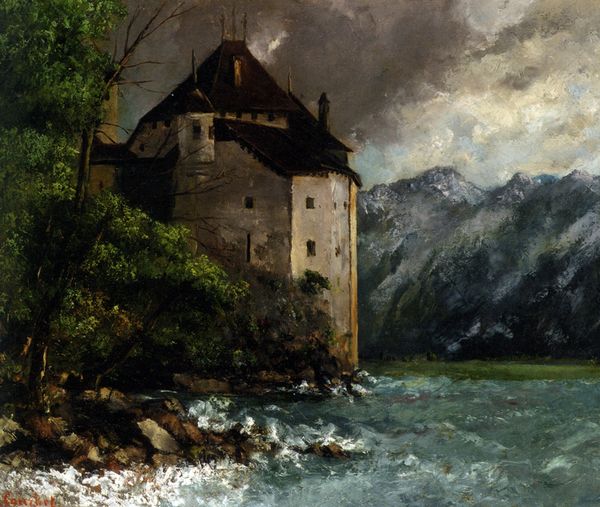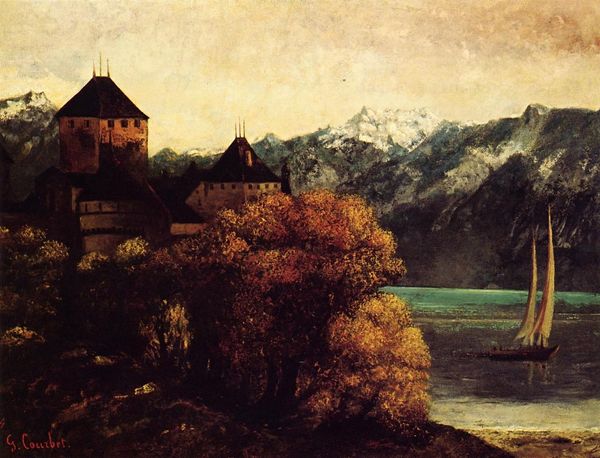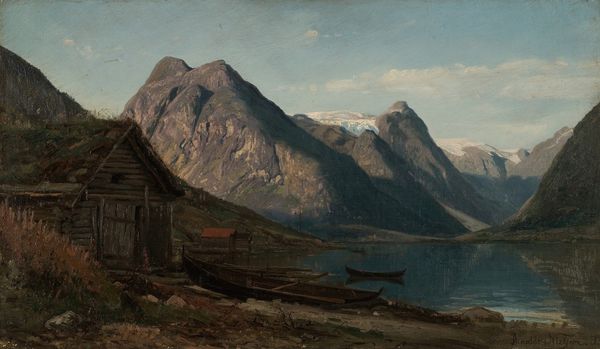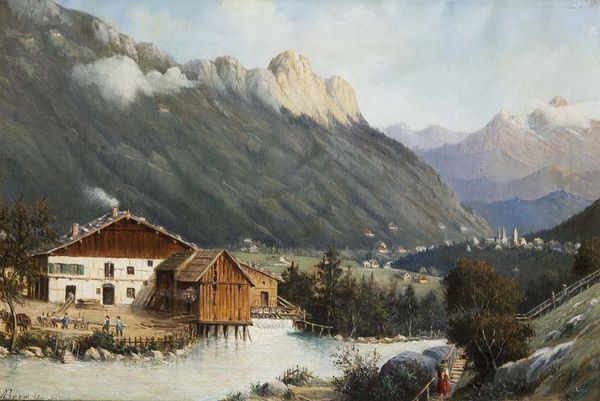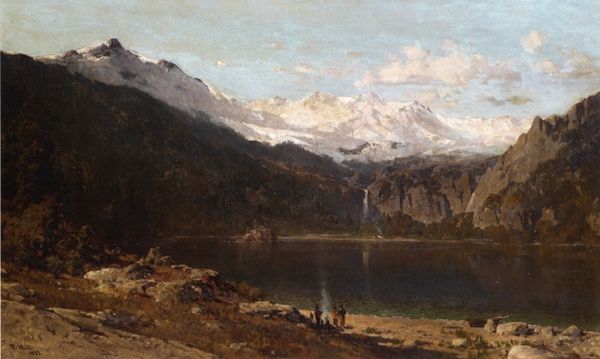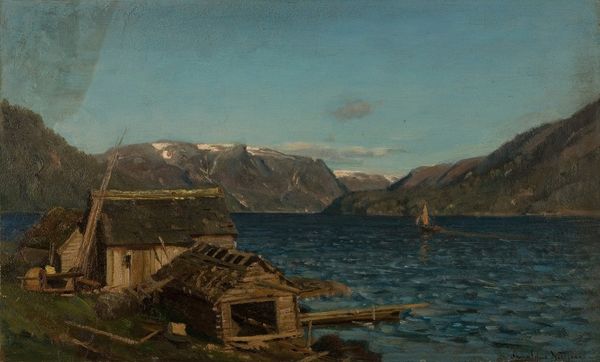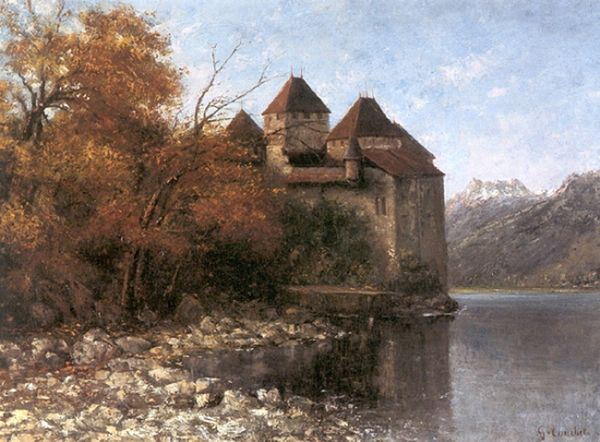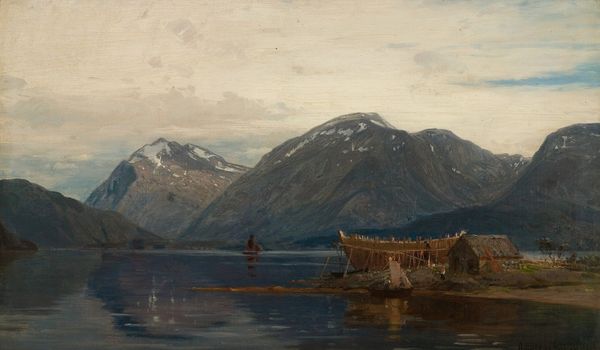
Copyright: Public domain
Editor: Here we have Courbet’s "Chateau du Chillon," painted in 1875 using oil paint. The castle is so imposing, and the overall composition feels really powerful with the contrast between the dark castle and the bright, snow-capped mountains in the background. What do you see in this piece beyond just the landscape? Curator: Beyond the immediate picturesque view, I see a reflection of Courbet’s own exile and defiance. Painted shortly after his imprisonment and exile following the Franco-Prussian War and his involvement with the Paris Commune, the Chateau could symbolize resilience against oppressive structures. Consider its history: Chillon was a prison. Doesn't the stark contrast between the imposing architecture and the serene natural setting also speak to the tensions between power and freedom, confinement and escape, a potent symbol of resistance? Editor: That's a perspective I hadn't considered. I was so focused on the romantic landscape, I missed the potential commentary on power dynamics. Curator: Precisely! Think about how Courbet, as a Realist painter, often sought to depict the unvarnished truth. By choosing this particular subject and imbuing it with his own lived experiences, he challenges the traditional, idealized landscape. He critiques systems. Does understanding this shift your perception of the artwork’s meaning? Editor: Absolutely. Knowing Courbet’s history and the castle’s function really adds a layer of depth to the painting. I see now how it’s more than just a pretty scene; it’s a statement. Curator: And that's how art engages with the world, reflecting and challenging our understanding of society. Editor: I'll definitely carry that insight with me. Thanks for helping me look beyond the surface!
Comments
No comments
Be the first to comment and join the conversation on the ultimate creative platform.

